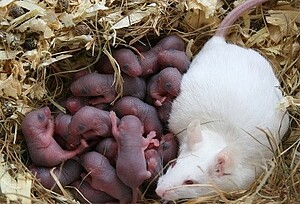Rederivation by embryo transfer
The introduction of new mouse lines into a barrier housing facility is an important source of contamination for other rodents housed there. Embryo transfer has been demonstrated to be an effective method to rederive mice known to be infected with viruses, parasites, and bacteria and thus reduces or prevents the risk of transferring animal pathogens into the mouse population.
Embryo transfer rederivation involves the aseptic collection of embryos from superovulated, donor females and the surgical transfer to SOPF pseudo pregnant foster females for final development. The superovulation, breeding and plug checks of donor females will be performed in our quarantine unit. Embryo collection, washing to reduce the risk of pathogen transfer as well as the final transfer into foster mothers will be performed within the ZVH.
After rederived pups are born and weaned, the recipient foster females will be tested to ascertain they are free of viruses, parasites, and pathogenic bacteria. Once the success of the rederivation procedure has been confirmed by negative test results, the mice will be released to their designated holding area.
Please contact us in time to discuss the procedure.

Mice recovered from cryopreserved embryos
The introduction of mice recovered from cryopreserved embryos usually pose a low risk of infection. Since cryopreserved embryos are transported with no impact on the welfare of animals this should be the method of choice.
A thawing protocol adapted to the freezing protocol from the laboratory that performed the cryopreservation should be provided.
Please contact us in time to discuss the procedure.